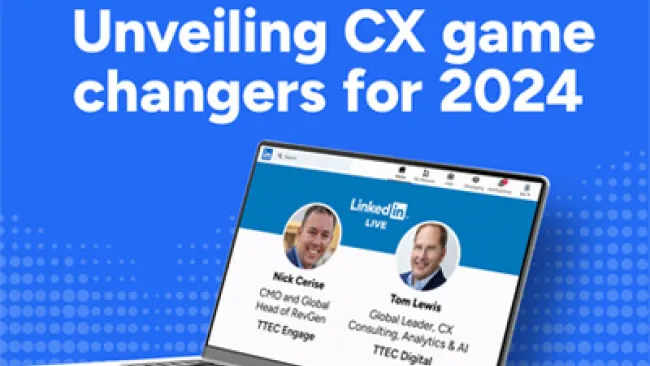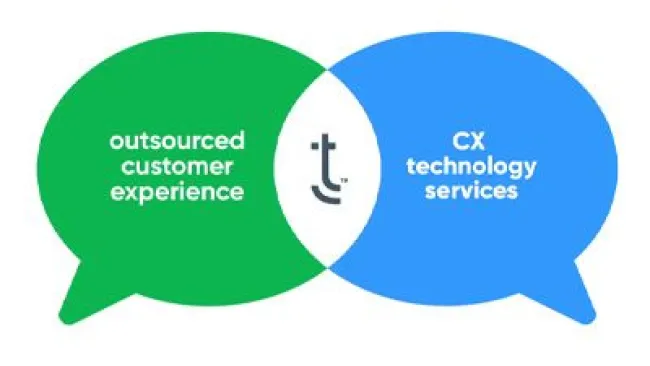Most executives recognize the importance of differentiating the customer experience. Unfortunately, far too many companies are stymied by organizational silos, inflexible technologies, and other barriers that prevent them from gaining a deep understanding about their customers and delivering the type of personalized and contextual experiences that keep customers coming back.
Fortunately, next-generation cloud computing technologies are emerging that can help bring the customer experience to a higher level. Advanced cloud analytics, customer journey mapping tools, and other space-age technologies will enable businesses to deliver faster and more intelligent customer experiences.
Here are five next-generation cloud technologies that will help elevate the customer experience:
1. Connecting the Dots With Customer Journey Mapping. Customers naturally gravitate to companies that make it easy to be a customer. Creating a frictionless path for customers starts by gaining a detailed understanding of the non-linear course that each customer takes across physical and digital touchpoints in his or her journey.
Cloud-based customer journey mapping platforms are enabling company leaders to identify the step-by-step actions taken by each customer that can then be used to streamline and simplify the customer experience.
For instance, a car rental customer who uses her smartphone to check on the availability of a brand and model she prefers to drive shouldn’t have to abandon the company’s mobile website to connect with a customer care associate. The customer journey should be designed so that there’s a coherent way for the customer to connect with an associate through a call or chat interaction without having to leave the mobile website.
2. Creating a Truly Seamless Omnichannel Customer Experience. Once companies are able to track the end-to-end customer journey, advanced cloud application programming interfaces (APIs) can be used to interconnect customer applications such as CRM and contact center platforms. By combining data across the full scope of a customer’s interactions with the company (transaction history, recent channel interactions, etc.), marketers and contact center professionals can obtain meaningful insights into each customer’s behaviors and interests. In turn, those insights can be used to provide customers with contextual and fluid experiences.
Businesses can use cloud APIs to deliver new and differentiated customer experiences. For example, data generated by Internet of Things (IoT) devices such as activity trackers (Fitbit) offer opportunities for companies to provide personalized and customized services to customers. Physicians, for instance, will be able to monitor a patient’s vital signs remotely and provide him immediate feedback on any changes to his condition that may require attention.
3. Advanced Analytics Will Drive New Levels of Customer Understanding. By improving their analytical capabilities, companies position themselves to better understand customers’ interests and needs and then apply these insights into improving the customer experience.
Advanced cloud-based customer analytics are making it possible for customer experience leaders to delve into a deeper pool of customer data from a variety of sources (CRM, social, third-party data providers) and capture anomalies and trends that were virtually impossible to spot before.
TTEC worked with a major wireless communications carrier to help company leaders better understand its customers and the triggers for churn. We developed an integrated data repository that contains virtually every piece of information the telecom company captures about its customers, including transaction data, product usage, engagement, customer care interactions, and profitability.
Using the assembled data, we were able to help company leaders explore the relationships it had with its customers and to identify the factors that increased a customer’s likelihood to churn. By developing statistical models to predict the likelihood for a customer to disconnect for reasons such as relocation, non-payment, or switching to a competitor, the telecom company has been able to proactively communicate with high-value customers and reduce monthly churn by 10 percent or more while boosting average revenue per customer by 5 percent.
4. Unikernels Unleash Transformative CX. Unikernel technologies represent a new way of building and running applications. Instead of building an application on top of an operating system such as Mac OS or Windows, unikernels allow for small pieces of operating system functionality to be plugged into an application. This means that companies can develop web applications that can be tailored to specific customer use cases.
For instance, retailers today are making extensive use of location-based data to generate email or SMS offers to a customer. A unikernel-driven customer management app can be used to deliver an enhanced customer experience. A retail sales associate can identify when a high-value customer has entered a store and draw insights from the unikernel app about the customer’s most recent product transactions and channel interactions that can then be used to provide the customer with a contextual experience based on everything that’s known about her.
5. Platform-as-a-Service Cements the Omnichannel Customer Journey. Platform-as-a-Service (PaaS) is a cloud computing model that supports applications over the Internet.
PaaS liberates companies from having to install hardware or software to develop or run applications.PaaS can be embedded into a mobile app or a website, enabling marketers and other business leaders to truly understand the context of the customer journey across devices and touchpoints. This type of data-driven approach enables customer-facing employees to see who a customer is, what he or she is doing at that moment, and the channel or channels the customer prefers to use.
As the healthcare industry continues to undergo dramatic changes, consumers are becoming more empowered and want greater control over their healthcare choices. TTEC worked with one wellness brand to address these behavioral shifts and make it easier to meet customers’ changing needs.
TTEC’s integrated PaaS capabilities enabled our wellness client to create and deliver advanced training programs and simulated learning capabilities that empower its employees to become experts in the company’s product, services, and processes. The PaaS platform allows wellness employees to manage member interactions across voice, email, social, video-chat, mobile-chat, and web-chat.
Member satisfaction rates and NPS scores have since skyrocketed. Meanwhile, 85 percent of members rate themselves as promoters after an interaction with the brand.
Next-generation cloud technologies are creating new ways for companies to deliver innovative experiences that differentiate the brand.
Five Ways That the Next-Generation Cloud Will Lift the Customer Experience

















